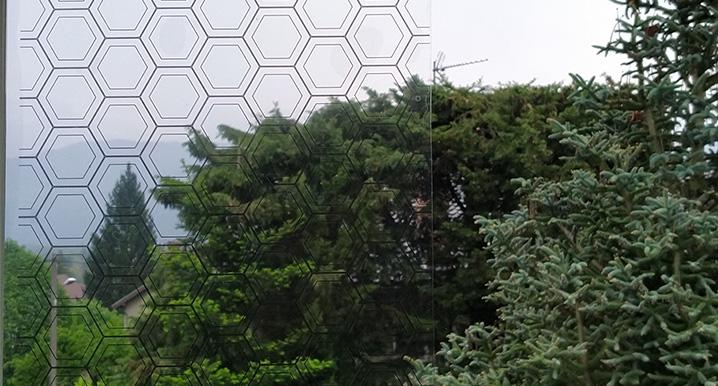
Wednesday, June 16, 2021 at 1pm
Plastic film for better network reception in buildings
Do you lose your signal as soon as you walk through your building’s front door? This is probably due to heat-insulated windows and other new advanced materials used to optimize the energy efficiency of buildings and meet new standards. These inevitably lead to a reduction in the transmissibility of waves of all kinds, including sound and electromagnetic waves such as those used by smartphones.
Windows with insulating glass are good for your energy bills, but bad for cellular reception. This type of glazing can attenuate cellular signals by 30 dB to 45 dB. Fortunately, IMEP-LAHC spinoff Lichens has a solution! The company’s smart plastic window films can mitigate signal attenuation by around 15 dB—enough to restore network service.
To resolve this issue, the Lichens start-up has found a solution that comes straight out of IMEP-LaHC. “We had already developed and patented paper coatings that could block waves such as wifi,” explains Tân-Phu Vuong, a lecturer at Grenoble INP – Phelma and a researcher at the laboratory. “We had the idea of doing the opposite and using the same technical processes to facilitate the passage of the waves and regain signal strength.” To do so, we used the frequency selective surface (FSS) process, which consists in printing patterns using conductive inks on plastic film”, continue François Vincent and Olivier Vandermoten, two engineers with a background in industry and the founders of Lichens. The film is intended to be simply placed on the window and glued by the adhesive power of plastic film. “These patterns favour the passage of certain frequencies by resonating with the conductive layer of the glass.” They enable an increase of at least 10dB for the desired frequencies and improve signal reception inside buildings.
An easy and removable solution
This solution is highly innovative and much less expensive than laser engraving the glass or active solutions that need to be powered by energy to function. The panels are removable and can be peeled off when cleaning or replaced with a more efficient version when the time comes.
This product is mainly aimed at small tertiary buildings and is expected to arrive on the market in 2022. “We are currently working to improve the visual aspect of the device, such as more discrete patterns or a greater transparency of the ink used to draw them.” The aim is to make the network available in a 20m2 room with a 50 cm X 50 cm adhesive panel. Once the product is ready, it will be produced on an industrial scale in partnership with Arjowiggins. In the meantime, trial films for a easier passage of specific frequencies are available for testing.
The innovation, which has been patented for Europe, the United States, and China, leverages clever patterns printed with a conductive metal ink that resonates with the glazing’s conductive layer. The film simply peels off for cleaning and will be easy to replace with a future 5G-compatible version. The product’s commercial release is slated for 2022 but Lichens is looking for test sites now. Interested?
Contact
Send a mail


